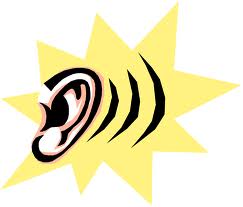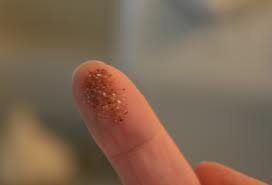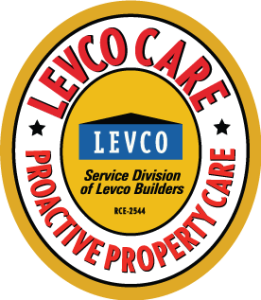Estimated reading time: 5 minutes, 57 seconds

Let’s first outline the subject matter. I recently published a similar blog on foundation moisture to review the senses and how they can be used to ferret out what is wrong. In this post I am exploring how I use my senses in a broader way. I work like a Crime Scene Investigator or CSI when it comes to remodeling. It gets easier with time but it requires concentration and some reflection when it is all done. The standard 5 senses work just fine for most things, however it is the 6th that often solidifies the course for my recommendations.
Common sense is not so common. What sets Levco apart is our willingness to get opinions from multiple experts. I realize that despite our experience, not all problems are simple to solve. Every contractor has an opinion, we reserve ours until we get corroboration from experts on complicated or rare problems. At Levco we run toward unusual situations, we are stimulated by the unusual and love to solve home problems. Our goal is to develop a plan that works to address the problems that are found.
Homes tell a story and a brief inspection using your senses usually helps you find clues about what the home was originally. You can also determine what had been done to keep it functional over the years as well as uncovers some mysterious things. On a very recent outing I found a large aluminum box adjacent to the stairwell. The owner told me that the HVAC guy said it used to be hooked up and was central air conditioning. I examined it and found a very early version of an electronic air cleaner.

SMELL: I just had a flashback to Grandpa Ben’s shop. Turns out that I developed a habit or reusing paint thinner, the sludge settles and the thinner is still good so when I opened the top I realized that this was an old grandpa Ben trick too. He was a child of the depression that stood in bread lines and ate hardtack at the orphanage so it comes as no surprise that he was thrifty.
I use my sense of smell most commonly on initial inspection; a whiff of something musty may mean mildew or mold. Some folks have a real reaction to mold, I do not, but that is a good thing to have. Sycamore trees give off a nasty thing at certain times of year that makes you cough and give you a scratchy throat. Dead things give off a powerful smell. Pets can ruin a home and their urine can really make a place stink. I recently smelled lots of naphtha or moth balls at a job site. Perhaps they had an infestation, it is an old remedy. Other smells are clues too such as cigarette smoke and occasionally coal; the important thing is to be aware that what you smell is as important as what you don’t smell.
One of my favorite stories about smell involves a close call with natural gas. We were smelling it in the neighborhood in the mornings and it was pretty strong. This had gone on for a few days so I brought my combustible gas sniffer and went to the neighbor’s house. I had it on as I knocked and when the door opened it started to scream. “GET OUT! I YELLED!” It was winter and they all filed out and I turned off the gas. After investigating I realized that the furnace was malfunctioning. I was able to fix it quickly. Did I save the neighborhood? Possibly, incidentally they had taken the flue off to get more heat in the home. I guess they had so many broken windows the carbon monoxide went out with the exhaust gasses. I fixed that too.

HEARING: Less helpful but there none the less. Creaking hardwood floors, sparking switches, outside noises while inside often means poor insulation or missing windows. Rattling fan blowers may indicate a poor exhaust fan or HVAC blower problem. Clogged exhaust fans make a weird noise too.

TOUCH: Moistness, damp feeling, temperature, I used my fingernails to identify Celotex, an old type of insulation/rigid board that made a nice printable ceiling. (In my research for this article I discovered that Celotex may have asbestos in it as a result of being mixed in back east. Touch is often used in conjunction with other senses to verify something that is not quite right.

SIGHT: The most powerful sense, looking for cracks, wavy walls, things that are out of place. Painted over wallpaper is a good example of a recent find. Occasionally we can find where a doorway once was. Other items include loose handrails, (your feet touch too) loose tiles, misaligned thresholds and transitions, stuck doors and door knobs, leaks and water where it doesn’t belong or fresh paint, so I ask myself, what are they hiding? Over spanned lumber or timbers. uneven flooring, scary electrical situations, Fungus growing on siding, bug infestation. I found a great site for things seen on home inspections.
Our eyes have an amazing ability to forgive and see past things especially once you get familiar with a place. That is why first impressions are so important. The eye sees it all, it takes a brain to determine if something is off.

TASTE: Not used often, although one time I was offered some tea and cookies, so taste came in handy at least once. To be honest I can’t recall a time when this sense came into play for determining anything of interest.

COMMON: The final and most important sense is common. I have seen so many homes that have been carved up without thinking. I am working on a home where they excavated beneath a poured cement floor. I see sagging floors only to discover that the supporting structure had been partially removed on several. I have yet to respond to a home cave in. I am certain it is just a matter of time. Faulty electrical wiring is a huge problem. We just removed a bunch of Romex wire that was stapled on the outside of the home that was abraded and deteriorated. Kids were playing around it.
I love telling the story of my dad giving a remodeling seminar and a fellow asked seriously…”I am considering taking down my brick chimney… Do I take it down from the bottom or the top”. I suppose those questions are fewer and further between thanks to the internet and quick access to good information.
Tools of the trade include a Moisture Meter, Flashlight, Camera, a poker to jab into the soil around foundations, Magnifying glass, Thermometer (instant read laser) Electrical Tester. Just to name a few.


Great article Joe. You are doing an awesome job with the blog.
Thanks Bob, I feel like I have found my stride.
Thanks for all of your work on this web page. I am looking forward to reading more of your posts in the future.
Thank you for noticing